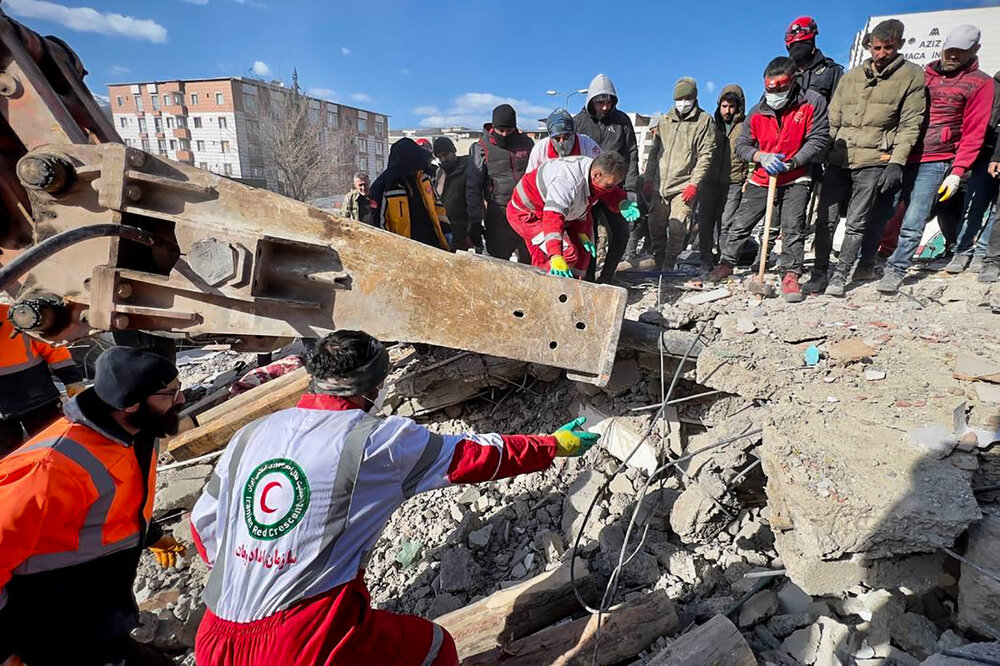INSUBCONTINENT EXCLUSIVE:
Major earthquakes on Monday morning, February 6, 2023, in southern Turkey and northern Syria, caused a lot of casualties and killed
thousands of people in the central area
Rescue forces are searching for the debris of buildings to find survivors who are facing severe winter cold, as well as power outages and
in the Syrian border area
damage in Syria, as well as in Iraq, Lebanon, Palestine, Egypt and Cyprus, and even parts of western Iran
Just nine hours after this earthquake, the second earthquake with a magnitude of 7.5 occurred on a different fault trend - with the
Anatolian fault system.Historical earthquakes along the eastern Anatolian Fault EAFZ system are notable on November 29, 1114, with a
magnitude of 7.8, March 28, 1513, with a magnitude of 7.4, and March 2, 1893, with a magnitude of 2
the southwestern end of this fault system, which ended on the morning of February 6.TectonicsThree main tectonic plates (Arabian, Anatolia /
and Iran / Eurasian plates in the Iran region forms the strip of the Zagros mountain range and the Zagros drift with a length of
plates also shortens the crust in Iran by about 3 cm per year
Red Sea gap is a center of expansion between the African and Arabian plates with an opening rate of approximately 10 mm per year near its
the southern border of the Dead Sea Transform fault
Dead Sea fault and the Arabian plate in its east, the Arabian plate moves a little faster, leading to the movement of the left-lateral slip
November 1759, it is estimated that between 2,000 and 20,000 people were killed
plates and the Anatolian block occurs
This includes the transition of the Anatolian block to the west, at a speed of approximately 25 mm per year compared to Eurasia, in order to
magnitude of more than M7.0 occurred along the North Anatolian fault system towards the west
The westernmost earthquake on August 17, 1999, was the M7.6 Izmit earthquake near the Sea of Marmara, which killed about 17,000
people.Earthquake seismicityThere are three main fault zones in Turkyie called the Eastern Anatolian Fault (EAF), North Anatolian Fault
A severe earthquake in 2003 in Bingol (MW = 6.3) occurred in the eastern intersection of EAF and NAF systems and towards the west, the
Anatolian plates in northern Turkiye
The extension of this fault on the floor of the Marmara Sea in the south of Istanbul, with a slip of about 18 mm per year and the occurrence
year occurs and has led to destructive earthquakes in eastern Turkiye
This EAFZ fault system is characterized by subdivisions with northeast-south-west and east-west directions, which are parallel to the
In two large earthquakes on February 6, 2023, first, an earthquake occurred in a northeast-southwest direction and then the second
of the Arabian-Anatolian plates leads to rapid changes in the velocity of the plate along the boundary, which is manifested by reducing the
less seismic with the return periods of 250 to 700 years for Pazarcik (first earthquake 6 February 2023) and 414-917 years for Amanos for 7
to 7.4By examining the statistics of Anatolian earthquakes, it is clear that such events can occur once a century
the direction of the North Anatolian fault for more than 1,000 kilometers - almost from one end to the other - in a series of 12 very large
occurred in the Gaziantep area with a population of more than 2 million
In the first earthquake, the southwestern part of EAFZ was broken for 180 km; from the surface to a depth of about 20 km (in a total
The second earthquake occurred 9 hours later at 13:24 local time along the east-west fault, the end of which reaches the rupture zone in the
morning of February 6, 2023, with a magnitude of 7.5.Therefore, this second earthquake, which was located 100 km from the epicenter of the
first earthquake, was not an aftershock and was the second independent earthquake.Will the next one be a strong earthquake in Istanbul? One
of February 6, 2023, there has been a big debate in public opinion and in the Turkish media about whether the next important earthquake will
Of course, if the two earthquakes of February 6, were to affect the faults in the Istanbul area, it should be said that it is unlikely that
the Marmara Sea, which passes through the city of Istanbul, has been very long
Three large historical earthquakes occurred in the North Anatolian fault zone in 474, 989, and 1766 with an estimated magnitude of about 7
It seems that with the situation in Turkiye after the earthquakes of February 6, 2023, this country, like most other middle east countries,
is unfortunately not ready for severe earthquakes near densely populated urban areas.
